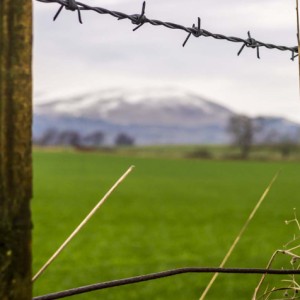Snowy Pentlands.
This week’s assignment is to learn about apertures, with the first task being to demonstrate their effects on depth of field. We have to cover hyperfocal distance later in the week so the f:22 shot still has the background a little blurred. The extra was taken at f:5.6 with the kit lens wide open. We were recommended to use a prime lens and shoot at f:2.8 but this one serves the purpose. I’m rather against wide apertures anyway, I see so many shots, particularly close-ups, ruined by too narrow a depth of field; great skill is needed to make satisfactory use of the effect. Then I have to take a picture demonstrating the "beautiful bokeh effect"; I hate bokeh with a passion, in my eyes it’s an overused and distracting cliché.
I was given my first “real” camera for Christmas when I was 10 or 11. I spent several months beforehand pestering all the suitable second hand shops, finding out how cameras worked and what was available within my budget before deciding on a second hand folding job which produced 2¼” by 3¼” negatives on 120 roll film;it came with a full range of shutter speeds and apertures. On Christmas morning I was out roaming the streets with it when a neighbour told me not to move for five minutes, he returned with a small pile of thin books, probably published by Ilford, explaining everything a young lad could possibly want to know about cameras and photography.
By some bizarre turn of events, 5 or 6 years later when taking the school certificate maths exam, there was a question about camera apertures, I don’t remember the details but I do know that, with my inside knowledge, it took me 5 minutes to answer a 20 minute question.


Comments
Sign in or get an account to comment.


